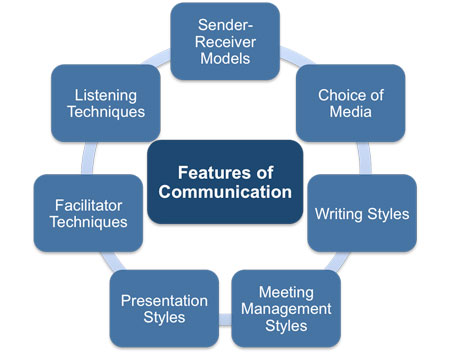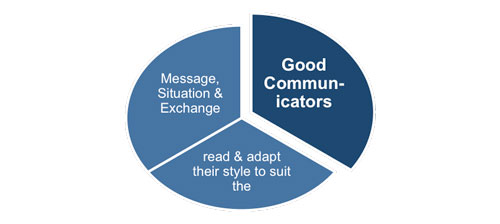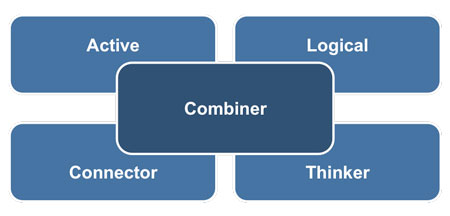Keeping Project Stakeholders Informed
During the execution phase of a project the classification of stakeholders information needs must be managed in accordance with the stakeholder management plan as shown in the diagram. This ensures that stakeholders' engagement remains constant throughout the project because their needs and any issues that affect them are addressed appropriately.
 |
By reducing resistance from stakeholders and gaining their support, a project manager can increase the chances for success on a project. The contents of the stakeholder plan for a significant input into how project communications are handled. The methods of communication to be used for each stakeholder are identified in the communications plan that also includes an explanation of how they will be put into practice.
In the event of a serious issue coming to light the best approach is usually a face-to-face meeting in which it can be dealt with diplomatically to everyone's satisfaction. In these situations a project manager needs to portray excellent communication and people skills to ensure that their message is clearly and positively delivered. Our free communication skills eBooks will ensure that your communications and presentations are effective.
 |
The important thing is that the project manager should have the ability to build trust and relationships. An individual's capability in building successful working relationships is now recognized as relating to their level of emotional intelligence (EI). This is at the heart of both individual success and project team productivity. It must also be reflected in the way in which project communications are designed and executed.
Therefore the project communications plan will define and set expectations of how information will be exchanged throughout the project. This plan describes the following guidelines on how information will be communicated e.g.
language to be used, format, content, level of detail, reason for the distribution, and glossary of common terminology.
It also defines the timing and frequency of the distribution, as well as the individual responsible. There is always a need within any project to communicate confidential information and it is this plan that outlines who is responsible for authorizing the release of such information and in defining who (individuals, organizations or groups) should receive it.
 |
All of the information provided to stakeholders should be at the level of detail documented in the communications plan. This plan describes the methods or technologies to be used and lists the resources allocated for communication activities. In addition, a process for identifying issues that cannot be resolved at a lower staff level will need to be worked out so that issues can be escalated.
Also, if the requirements for communicating with the stakeholders change, these must be reflected in the communication plan. Any changes in the engagement of specific stakeholders need to be included in updates to the stakeholder register, and the organization should keep the experience with stakeholders on the current project in mind for inclusion in lessons learned documentation, which may help stakeholder management on future projects.
The importance of a project communications plan cannot be overstated and as such it is essential to provide an overview of the general features of 'good' communications as shown in the diagram.
 |
Sender/Receiver Models
This reminds the project manager to make sure that a response is asked for to ensure that the message has been decoded correctly and its meaning has been understood.
Choice of Media
The media that is selected to transmit the message is heavily dependent on the nature of the information you want to exchange and how it is likely to be used. For example when:
Information is for instructional or structural purposes an entry on an intranet, wiki or blog may be the best media.
Wanting to inform others involved in the project on a particular aspect of the project the best media would be email, memo, text, report etc.
There is a need to discuss or debate a specific issue or problem then the most effective media would be interactive - meeting, video or web conferencing.
Another key aspect you need to consider when selecting the media for your communication is how permanent does it need to be and do you need an acknowledgement it has been read and understood by the intended recipient?
The media you use attaches a level of formality to your information. You need to ensure that the method selected is given the same level of importance as you intended by its recipient. For example, emails are considered a formal way to communicate by those entering management. Whereas experienced managers see them as informal! Does the language used define whether it is formal or not?
Writing Style
This has two aspects and has a strong correlation to the nature of the information to be shared.
Degree of formality - Reports will be written in a formal style and format, yet emails between the project team will be informal. The nature of the communication will play a significant role in deciding the level of formality.
Style of writing - the project manager needs to adopt the one which will best communicate the desired information in a way that gets the correct meaning across to the recipient.
Communication can be written in the passive voice ("mistakes were made") removing direct blame or accountability. Or in the active voice ("You made a mistake") which is more direct and includes the reader in the communication by addressing them personally.
Meeting Management Styles
The style in which meetings are managed is influenced by the culture of the organization along with the urgency and importance of the topic for the meeting. Another significant factor in deciding the how you manage your meeting is the status of your audience and the image you want or need to portray.
The success of your meetings is largely dependent on how well you have prepared yourself, the participants and the agenda. For example:
Workshop - this may be your selected style when defining the work packages with the project team. The more informal management of this type of meeting and layout of the room will make it easier for new ideas and initiatives to be discussed. (To understand more about the influence of the layout of your meetings click here.)
Planning - by its very nature the purpose of this type of meeting means it is important and therefore a more formal management approach reflects this. The need to have an experienced chair and timed agenda proved the structure and direction needed to develop the plan.
Decision-making - this type of meeting will be formal due to the key personnel involved whose expertise or role (project sponsor, stakeholder etc.) will play a significant part in the project's success. Planning and preparing for how to manage such meetings is critical and will ensure that you portray a professional image.
 |
Presentation Styles
is largely influenced by your audience of your message. Are you presenting an update to stakeholders? Are you letting the project team know how well things are progressing? Do you need how well a new person is settling in?
o Formal - is the style you would adopt for providing your project stakeholders with an update. This portrays the correct image and level of importance you want for this type of presentation. It also gives you the most control of the messages you want to give and helps you manage their expectations effectively.
o Informal - is the style you would use when updating the project team. This is because you will be presenting this type of information regularly and you want the environment to encourage discussion.
o Ad hoc communications are a significant part of a managers role. This style of presentation would be used in both proactive and reactive situations where you needed to gauge another's understanding and motivation such as a recent secondment to the team. Your ability to actively listen in such instances is critical.
The level of preparation you need for a presentation is reflected in the importance of your message and the level of formality attached to it. (Our free eBook on planning a presentation will give you more detail in this area.)
Facilitation Techniques
These are a significant part of a successful project manager's skill set. These techniques will be used in the project meetings and presentations to help achieve their objectives.
o Splitting larger teams into groups of 3-4 people enables several aspects of a project to be discussed at the same time. Each group them presents its findings to the team for their agreement.
o Mind maps enable initiatives to be explored in an open and unrestricted way. It provides the opportunity for people in the project team to contribute their knowledge in an impartial way and without prejudice.
o Brainstorming is an excellent technique for generating and exploring ideas. To use this technique effectively clear instructions of how people should act and when comments on contributions will be discussed must be given. You need to give thought to how you will record this output i.e. who records the data, who manages contributions, how it is noted etc?
Listening Techniques
These are an essential to ensure effective communication. Each individual has their own style of communication (see diagram below) that means they have a preferred way of listening.
 |
Active communicator finds it hard to listen because they are quick to draw conclusions and jump in to pauses. This can be counter-productive in a project environment as key issues may be missed.
Connectors listen in an empathetic way and focus on the need to understand the feelings and emotions of the situation. This aspect of listening is important but it has to play a minor role in managing a project.
Logical communicators will listen for the facts and figures in the message and assess how well it fits their own opinion. This may prove problematic if the individual finds it hard to be objective about what they hear.
Thinkers are critical listeners who need to evaluate, appraise what they have heard.
Combiner will use active listening (this is discussed in detail in its own eBook) so that 100% focus is on the conversation and they questioning and paraphrasing to confirm their understanding is correct.
To learn more about your preferred style of communication and how it impacts on your exchanges with others download our free eBook on effective communications.
The contents of the Project Communications plan and its impact throughout the whole project life cycle is how others will judge the project manager. This individual's credibility and professional standing will formed on this plans successful implementation.
This plan also forms the bedrock of a project manager's ability to make decisions that ensure the efficient running of the project. It is only by creating an environment where there is a free and open exchange of information between all parties that such decisions can be made.
The existence of a formal plan in the project management environment is essential because more than any other management function enormous amounts of data and information must be collected, collated and analyzed in a controlled manner.
You may also be interested in:
Managing a Project Team | Developing the Project HR Plan | Building an Effective Project Team | Developing the Project Team | Dealing with Conflict in the Project Team | Planning Project Communications | Optimizing Project Communications | Managing Project Communications | Identifying Project Stakeholders | Keeping Project Stakeholders Informed.
|
|


